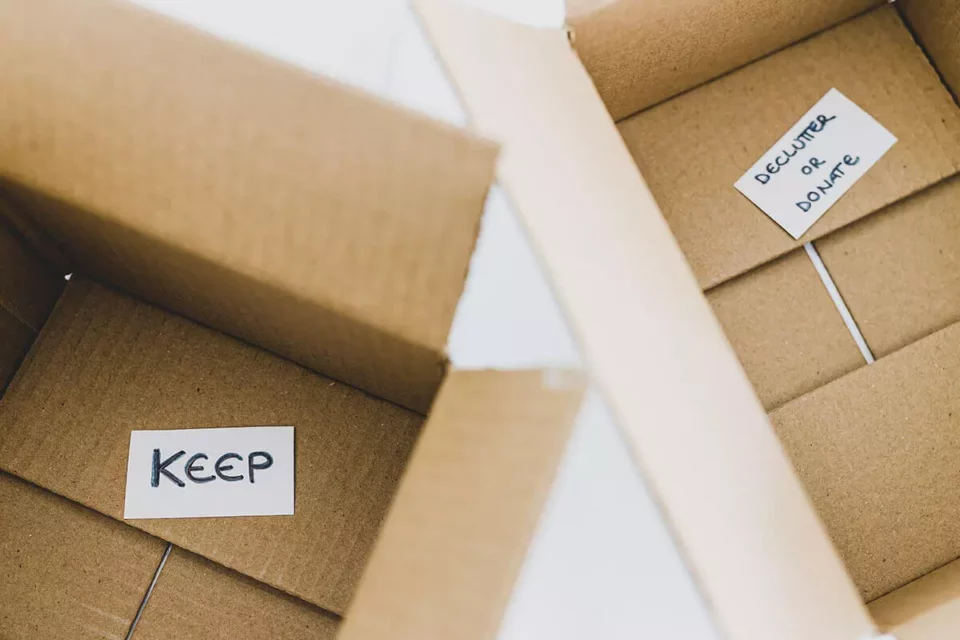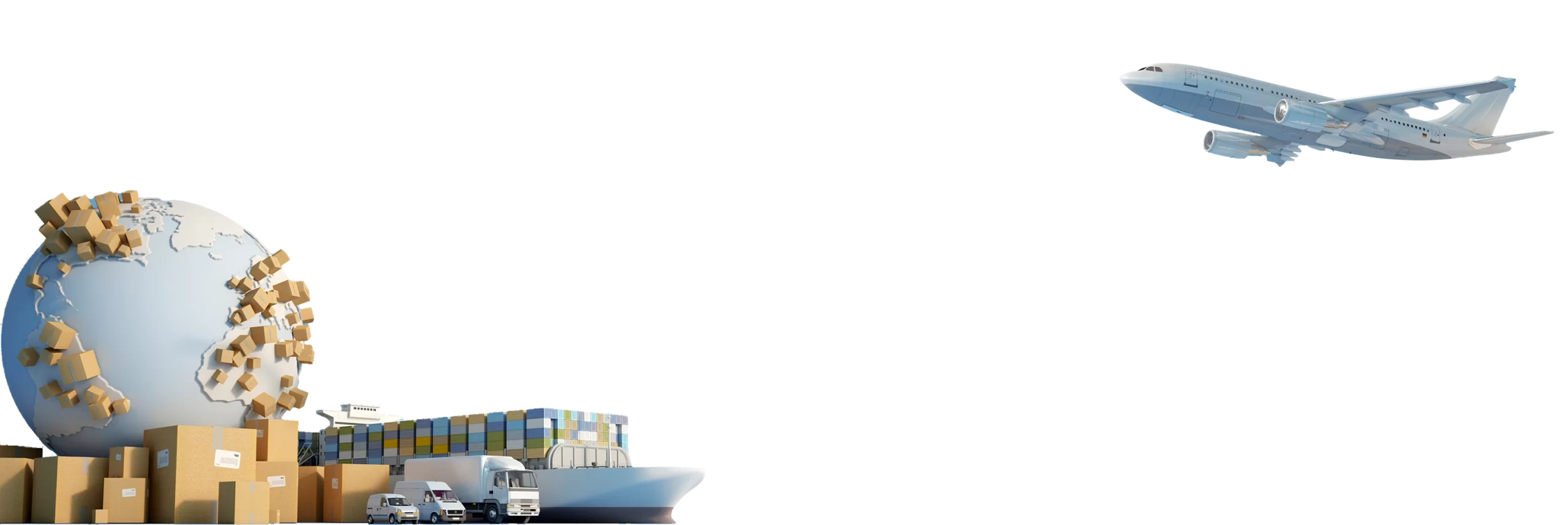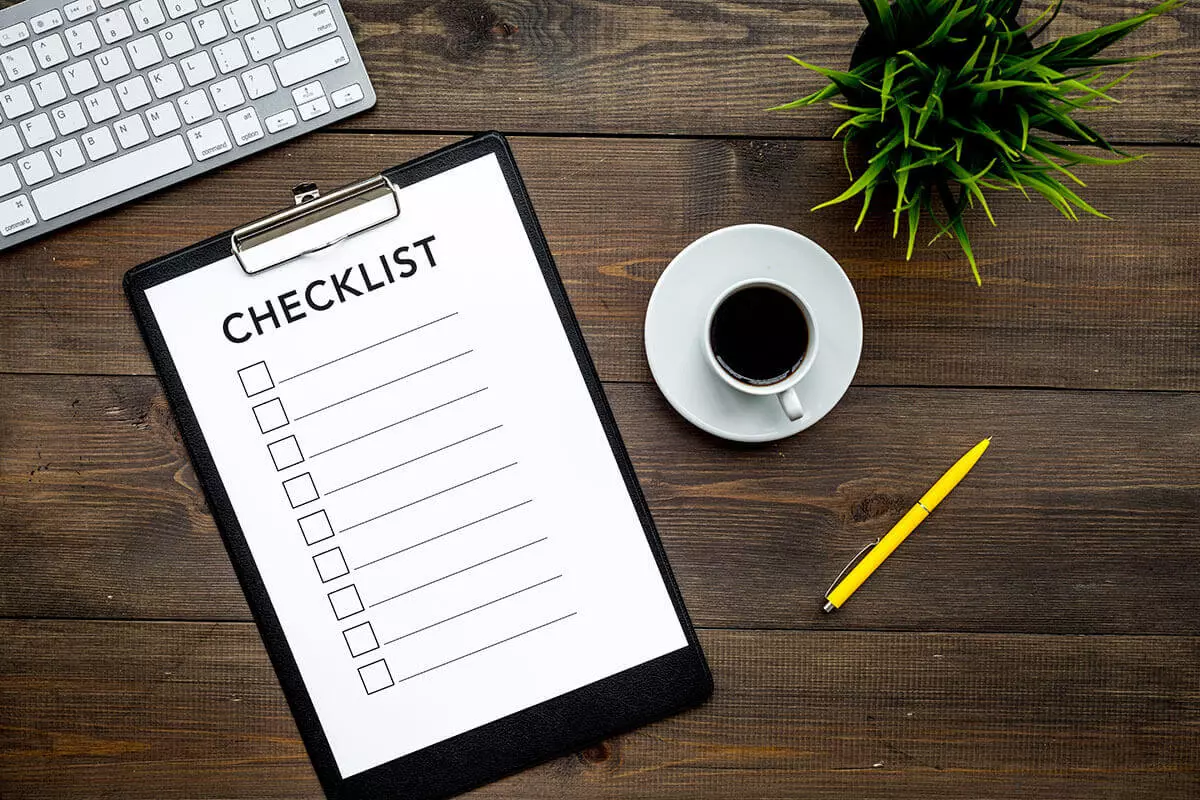Moving overseas can be exciting, but the process itself often comes with a fair share of challenges. From packing to coordinating, it’s easy to feel overwhelmed. However, by getting organized to move right from the start, you can transform this task into a smooth and efficient experience. Follow our guide, where we will walk you through the essential steps and expert tips to help you streamline the relocation.

How to get organized to move in the best possible way? To get organized for a move, start by creating a detailed checklist and timeline. Sort and declutter belongings, label boxes, and create an inventory. Don’t forget to gather important documents and hire reliable movers.
Before Getting Organized to Move, Assess Your Moving Needs
Moving internationally demands a lot of preparation, so before you start any of the tasks ahead of you, it’s crucial to begin by thoroughly assessing specific relocation needs. Take the time to evaluate the size and scope of the relocation. Consider the volume of the belongings, whether it’s a small apartment or a large house, and factor in any specialized items like fragile artwork or antiques.
Additionally, determine the timeline and deadlines. International moves often involve more complex logistics, such as customs procedures and shipping overseas arrangements, which may require additional time for preparation. By understanding specific requirements, you can tailor organizational efforts accordingly and ensure a smoother transition to a new international destination.
Evaluate the Size and Scope of Your Move
When moving abroad, evaluating the size and scope of the relocation is one of the first steps you need to take. Assess the number of rooms you’ll be moving from, the furniture and appliances you plan to take, and any additional belongings you want to pack. Consider the restrictions or regulations specific to the destination country, as some items may require special permissions or have import limitations. Once you determine what you will not pack and what you will, the search for an overseas moving company will be much easier.
The size of the shipment will affect the relocation budget and what kind of services you will take. For example, for big moves where you will be relocating furniture, you will have to opt for international moving by sea, where there are virtually no limitations on the quantity of shipped stuff. For smaller moves, you can choose to relocate by air.
When it comes to international moving, it’s essential to choose a reliable moving company that offers a range of services to meet any specific needs. For instance, companies like My International Movers provide an option known as Less Container Load (LCL) shipping.
This service allows you to transport a smaller quantity of items without having to book and pay for an entire container. It’s a cost-effective solution for those who don’t have a large volume of belongings to send overseas. Therefore, when selecting an international moving company, it’s crucial to thoroughly research and inquire about special services like LCL to ensure you find the best fit for any requirements and budget.
Packing Services
International relocation can be divided into several main stages and packing is one of them.
Read MoreOverseas Vehicle Shipping
When it comes to relocating your car, there is a way to do it that won’t cause a headache.
Read MoreStorage Service
Organizing an international move can be a nightmare if you don’t have a professional relocation company to help you with the overseas shipping of your entire household inventory.
Read MoreDetermine the Timeline and Deadlines
Relocating across the world and organizing this event requires a clear understanding of the timeline and deadlines. Consider the necessary time for shipping arrangements, customs procedures, and obtaining any required documents to travel abroad.
Factor in the time it takes to sort and pack the belongings, as well as any required vaccinations or medical preparations for you and your family. If you are relocating with dogs or any other pets, you will have to prepare them for travel as well.
By establishing a realistic timeline, you can create a step-by-step plan, allocate sufficient time for each task, and avoid unnecessary moving stress as you navigate the complexities of an international relocation.
Consider Any Special Requirements or Challenges Specific to the Move
An international relocation often presents unique challenges and special requirements that you need to consider during the organization process. Research the specific regulations and customs procedures of the destination country, such as prohibited items or restricted imports. Identify any language barriers that may impact communication with local service providers or authorities.
Additionally, take into account any cultural differences or lifestyle adjustments you may need to make. For example, if you relocate to Singapore, you should know that chewing gum is illegal and punishable by two years in jail and a $100,000 fine. Or, if you relocate to Spain and decide to ship a car there, you should know that driving in flip-flops is forbidden.

Create a Detailed Moving Checklist
Creating a comprehensive getting-ready-to-move checklist is an essential step to stay organized throughout the relocation. Start by listing all the tasks you need to accomplish, such as notifying utility companies, forwarding the mail, and transferring medical records. Break down the moving organization list into manageable sections. Include pre-relocation preparations, packing, transportation arrangements, and post-relocation tasks. As you complete each item, check it off to track the progress. Here’s a sample table outlining the tasks that can be included in a comprehensive moving checklist.
| Pre-Move Preparations | Packing | Transportation Arrangements | Post-Move Tasks |
|---|---|---|---|
| Research moving companies | Gather packing supplies | Schedule overseas shipping company | Unpack and organize |
| Notify utility companies | Declutter and donate | Arrange for vehicle transport | Update address |
| Forward mail | Pack non-essential items | Coordinate pet transport | Set up utilities |
| Transfer medical records | Label and organize boxes | Book flights or tickets | Register with new schools/jobs |
| Cancel or transfer subscriptions | Pack essential items | Arrange for storage | Connect internet and TV |
| Change address with banks | Wrap and protect fragile items | Obtain necessary travel documents | Explore new neighborhood |
| Arrange for cleaning services | Create an inventory | Plan for temporary housing | Register with local authorities |
| Take photos of valuable items | Update insurance policies | Follow up with any outstanding tasks |
Start Sorting and Decluttering
Sorting and decluttering belongings before relocation is a crucial step that can greatly simplify the whole process. By categorizing items into keep, donate, sell, and discard piles, you can make informed decisions about what to take with you and what to let go of. Consider utilizing the popular decluttering golden rule to toss away any item you haven’t used for more than two years.
This will help you determine which belongings truly bring you joy and are worth bringing to your new home. Setting goals and establishing a timeline for decluttering each room will keep you on track and prevent overwhelming last-minute rushes.

Utilize Different Techniques and Pack Efficiently
To pack efficiently for relocation, there are several moving organization tips and techniques you can utilize to maximize space and ensure the safety of your belongings. Here are some techniques that can help you pack more efficiently:
- Use proper packing materials – Invest in sturdy moving boxes, duct tape, bubble wrap, and paper. These materials will provide protection and prevent damage during transit.
- Pack room by room – Box up one room at a time to keep everything organized. Label every box with the number or color assigned to a room it belongs to, as well as its contents. That will make unpacking easier and save time in the long run.
- Employ the Tetris method – Optimize space within boxes by filling gaps with smaller items, such as socks or towels, to maximize efficiency. However, ensure you don’t overpack boxes, as they may become too heavy or prone to damage.
- Protect fragile items – Use bubble wrap or paper to wrap delicate items individually. Place them in sturdier boxes, and fill the containers with cushioning and padding materials to prevent unwanted shifting during transit.
- Separate the essentials – Assign a separate box or bag to essential items you’ll need as soon as you get to a new home. These may include important documents, a change of clothes, toiletries, and basic kitchen supplies. Keep this box easily accessible to avoid searching through packed belongings.
- Take pictures of electronics – Before disassembling any electronics, take photos of the setup and connections. This will serve as a helpful reference when reconnecting them in a new home.
- Label and inventory – Every box should be clearly labeled with the list of contents and the name of the room where it should go. Consider creating an inventory list or using a moving app to keep track of all packed items. This will help you stay organized during the relocation and make unpacking more efficient.

Know How to Manage Important Documents
Managing important documents is crucial during relocation to ensure a smooth transition. Start by gathering all essential documents, including passports, IDs, birth certificates, insurance policies, and medical records. Organize them categorically, using separate folders or labels for each category. Creating copies of documents, both physical and digital, is essential for added security. Store digital copies in cloud storage or password-protected files to ensure easy access and protection against loss or damage.
Consider using a document checklist to track progress and ensure you have all the necessary paperwork for the relocation. Safeguard valuable documents by keeping them in a fireproof safe or a safety deposit box. Check this video for more detailed tips on how to organize documents.
Hire International Movers to Help You With the Relocation Process
Hiring international movers is a wise decision for a seamless and stress-free relocation process. Professional movers will provide expertise in navigating the complexities of international moves and customized solutions tailored to your specific needs, ensuring that your belongings are packed securely and transported safely to the new destination. And if you wish to relocate without any stress, you can always hire movers for packing services as well. This will take a load off your back and allow you to focus on other tasks of an international relocation.
Follow Our Guide and Your Relocation Will Be Smooth
The relocation journey can be remarkably smooth and stress-free if you follow our tips. From assessing relocation needs and establishing an organizational system to sorting, decluttering, and utilizing efficient packing techniques, you’ll be well-prepared for an international relocation.
However, to truly experience a hassle-free and successful relocation, consider reaching out to our My International Movers. Our expertise, tailored solutions, and experienced team will ensure a seamless transition to your new home. Contact us today, and let us assist you in making an international relocation a seamless and enjoyable experience.
FAQ
How Far in Advance Should I Start Organizing for My Move?
It is recommended to start organizing for a relocation at least 8-12 weeks in advance. This allows ample time to sort and declutter, obtain the right supplies, and plan the logistics.
How Can I Effectively Declutter and Decide What to Keep or Get Rid Of?
A helpful approach is to categorize items into keep, donate, sell, and discard piles. Ask yourself if an item is useful, brings joy, or has been used within the past year. If not, it may be time to let it go.
What Supplies Do I Need for Organized Packing?
Essential supplies include sturdy boxes, duct tape, bubble wrap, paper, markers for labeling, and furniture blankets for protection.
How Should I Label My Boxes to Stay Organized?
Label each box with the room it belongs to and provide a brief description of its contents. Consider color-coding or using numbering systems to further enhance organization and make unpacking more efficient.
What Is the Best Way to Organize Important Documents During a Move?
Create a dedicated folder or envelope for important documents. Make digital copies and store them securely in cloud storage or password-protected files for easy access.
Are There Any Apps or Tools That Can Help With Organizing My Move?
Yes, there are several helpful apps, such as moving checklists, inventory trackers, and note-taking apps, that can assist with organizing relocation. Examples include MoveAdvisor, Sortly, and Evernote.
How Can I Stay Organized While Packing Multiple Rooms at Once?
It’s best to focus on one room at a time to maintain organization. Use separate boxes and label them accordingly to avoid mixing items from different rooms.
What Strategies Can I Use to Keep Track of Inventory and Ensure Nothing Gets Lost During the Move?
Create a detailed inventory list or use inventory management apps to keep track of your belongings. Number your boxes and note their contents to ensure nothing goes missing.
How Do I Pack and Organize Fragile or Valuable Items?
Wrap fragile items individually with bubble wrap or paper, and pack them in sturdy boxes. Clearly label these boxes as “fragile” and consider using extra cushioning material for protection.
What Should I Do With Items That I Don’t Want to Bring With Me but Are Still in Good Condition?
Consider donating these items to charitable organizations, selling them online or through a yard sale, or giving them to friends or family members who may have use for them.
How Can I Manage My Time Effectively When Organizing for a Move?
Set specific goals, establish a timeline, and break down tasks into smaller, manageable steps. Prioritize and allocate time for each task to ensure progress and avoid last-minute rush.
Should I Pack Room by Room or by Category?
Packing room by room is generally more efficient and helps with the organization during unpacking. However, you can also pack by category if it suits your preferences and the nature of your belongings.
How Do I Handle Organizing and Packing Larger or Awkwardly Shaped Items?
Disassemble larger items whenever possible to make them easier to pack and transport. Keep hardware or assembly instructions in labeled bags taped to the corresponding furniture or item.
What Should I Do if I Have Limited Storage Space in My New Home?
Prioritize and declutter before the relocation to reduce the number of items you need to store. Consider renting a storage unit if needed or utilizing creative storage solutions, such as under-bed storage or wall-mounted shelves.
How Can I Maintain an Organized System When Unpacking in My New Home?
Unpack room by room, starting with essential items. Use your labeling system to guide you and take the opportunity to declutter further as you unpack. Maintain a systematic approach to ensure an organized and efficient unpacking process.



















